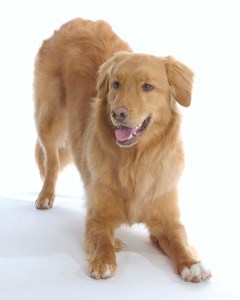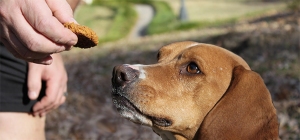One of the things that I love best about training dogs (and there are many, many things to love about training dogs) is that they respond well to so many different types of positive reinforcement. We have a wide variety of “fun stuff” from which to choose that communicates “Yes!!! That is it!! You are SO very, very smart and good!!”. We can use food treats, petting, verbal praise, an opportunity to play tug, a retrieving game, or even a chance to play with a best dog buddy.
YES! I am good AND I am smart!
Food is generally considered to be one of the most, if not the most, powerful and universal primary reinforcer that we use in dog training. This is true simply because most dogs love to eat, (and as far as I can tell anyway, all dogs gotta eat). Social interactions such as verbal praise, petting, and playing are also effective, but dogs seem to vary considerably in their responses to these; some turn inside out for cuddle time while others do better with a rousing game of tug-o-war. The cool thing is that we have food treats, various ways to convey love and affection, and various types of play to use as positive reinforcers to help our dogs to learn.
Still, there continue to be trainers and owners who eschew the use of food treats and insist that dogs respond equally well to praise and petting as they do to food treats.
Do they? Recently, Megumi Fukuzawa and Naomi Hayashi of Nihon University in Japan asked exactly this question (1).
The study protocol: The researchers randomly assigned a group of 15 adult dogs to one of three treatment groups. All groups were trained first to do a short sit/stay exercise (baseline training) and then to “come when called” from increasingly long distances. All of the dogs were trained by a single trainer and each group differed only in the type of +R that was used. These were either Food (soft moist dog treats), Stroking (gentle petting on the head and shoulders), or Praise (“good boy/girl!”).
FOOD TREATS STROKING PRAISE
Their Results: First, all of the dogs learned the tasks successfully. However, the number of sessions to attain proficiency and the response times differed with the type of reinforcer that was used:
- When food treats were used to positively reinforce sit and stay, the number of sessions needed to learn the task was significantly less than when praise or petting was used (4.8 sessions for food; 12.8 and 12.4 sessions for praise and stroking, respectively).
- When food was used to teach come when called, the response time was significantly faster than when either stroking or praise were used as positive reinforcers. Praise fared slightly better than petting for this exercise, but the difference was not statistically significant.
- Interestingly, when the trainer was closest to the dogs during the early “come when called” sessions, the dogs responded almost equally well to all three reinforcers, with food showing a slight but non-significant advantage.
Take Away for Dog Folks: This study supports what so many trainers know and use daily: Food treats, petting and praise are all effective positive reinforcers with dogs. Using food treats may enhance learning by reducing the number of sessions needed to acquire proficiency and speeds response time. So keep those treats in your bag of tricks – They work great and your dog loves you for it!
HAPPY HALLOWEEN FROM THE SCIENCE DOG!
Reference: Fukuzawa M and Hayashi N: Comparison of 3 different reinforcements of learning in dogs (Canis familiaris). Journal of Veterinary Behavior 2013; 8:221-224.






It always feels that way! Glad to see this study.
Any information about retention of the skill using these three types of reinforcers?
LikeLike
Hi Jane – Oooh….great point. There is some work that looks at the extinction of a learned tasked that was taught using either clicker training or food alone (I have it in the pile and hope to do a blog on it soon), which is one way of measuring retention. However, I am not sure if there is anything other than that paper. Will keep my eyes open! (So many cool papers…….so little time….. :))
LikeLike
Reblogged this on Exposing the Big Game and commented:
Happy Howloween!
LikeLike
Thank you Jim! Happy Fall Colors to you! (Although I have a feeling that it is looking more like winter these days in your neck of the woods!).
LikeLike
Reblogged this on Wolf Is My Soul.
LikeLike
Thank you!
LikeLike
Reblogged this on Homemade Dog Food Matters and commented:
This is off my normal discussion about nutrition but thought you all might enjoy this great article.
LikeLike
Reblogged this on Homemade Dog Food Matters
LikeLike
Thanks Ken!
LikeLike
Reblogged this on Mylo in HK!.
LikeLike
Hi Linda
The full text is paywalled, dammit !
Did they control for hunger ? is the first thing that jumps into my head. I had a staffie bitch that would retrieve a dog biscuit undamaged – but only if I gave her a good meal just beforehand ! She was also very particular about the kind of touch rewards she got – or put another way the kind of touch that she found rewarding; a little scratch on the head of chest or a rub behind the ear would do it, but not body strokes.
Food and touch (the nice kind) are primary reinforcers, but surely praise (I am assuming verbal) has to be conditioned by pairing with e,g, food or play or touch – how did they handle that ?
Fascinating as ever – keep them coming !
Peter
LikeLike
Pingback: Treat Tips for Trainers – The Science Dog
Pingback: Taste Tests with Your Dog’s Food Toys – The Science Dog